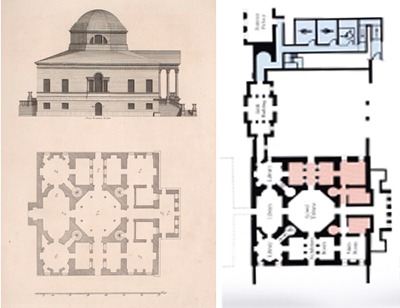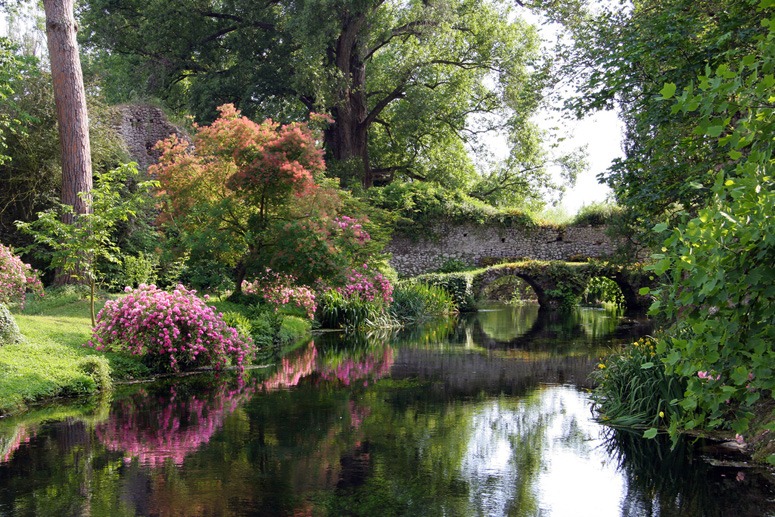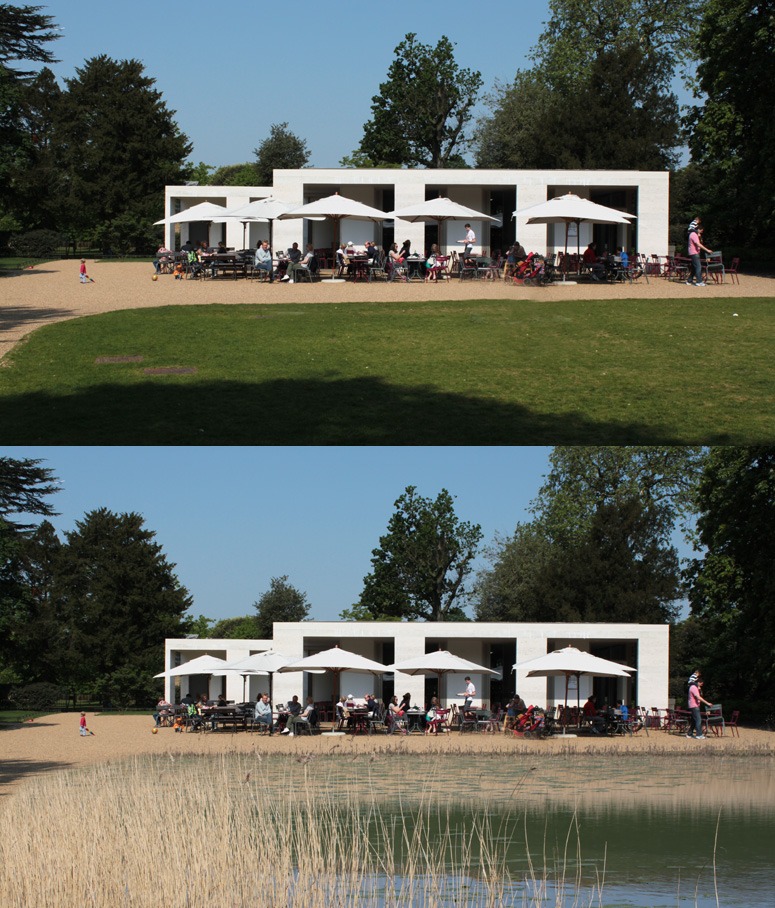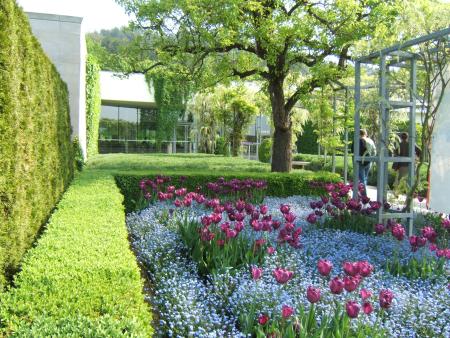We observed that Hemel Hempstead Water Gardens are a National Disgrace and that Hemel Hempstead Water Gardens are getting worse and worse and worse. This led to a number of people making contact to say ‘If someone started a Friends of the Water Gardens organisation then I would help’. This, I believe, is the best way forward. As our Prime Minister would say ‘It is a Big Society initiative which would cost Dacorum Borough Council little and make the standard of care much higher’. Jane Austen, however, would have said that ‘It is a truth universally acknowledged, that two old ladies with good skills can manage a garden better than a dozen youths in sweatshirts’. I would caution her against sexism but confirm that good gardens need brains more than they need brawn. A gardener has to know what to do, how to do it, when to do it, where to do it and why it is being done.
Britain is a nation of gardeners to a much greater extent than it is a nation of shopkeepers – and to a much greater extent than America. But UK public parks make hardly any use of volunteers. The UK National Trust, in comparison, makes extensive use of volunteer gardeners and in the USA it the normal way of managing public gardens and parks. New York City Department of Parks and Recreation, for example has a page for volunteering. So do US gardens open to the public, like Longwood and so do US botanical gardens like Missouri.
My suggestion to Dacorum Borough Council (DBC) is to provide an elegant little building with a verandah where volunteers can keep their tools, wash their hands, make tea, distribute seeds and keep an eye on the gardens. You can see how this would work at Phoenix Garden in London. It is an approach which would soon make the Hemel Hempsted Water Gardens a beautiful place and a social amenity. Old folks would go there to meet their friends and get healthy exercise. The Council might find its social services bill falling as fast as its parks maintenance bill. The lager drinkers one sometimes sees in the Water Gardens might change to a life of tea drinking and hard work. Younger volunteers might find that the skills learned from older gardeners leading to skilled employment. So come on DBC: why not make everyone happier and reduce the Council budget? Isn’t that your job?
Category Archives: Garden Visiting
The future is blossoming
The stained glass windows of Josef Albers (1920-33) demonstrate the remarkable advances that were made in glass art in the period between 1885 (with the Tiffany glass Company) and 1933 (with students from the Bauhaus), and the increasing links between emerging art movements and gardens (hinted at by Filoli ).
Art Nouveau began a remarkable period in the history of art, when designers inspired by nature and natural forms, began a creative transformation which would lead to the pure abstraction of Modernism, perhaps most typified in the work of Gustav Klimt.
Louis Comfort Tiffany, was the third generation of successful American entrepreneurs. His father founded the jewelry company, Tiffany & Co, while his grandfather had been a leading cloth manufacturer.
Mirroring the emerging emancipation of women which typifies the age, the daffodil lamp, designed by one the ‘Tiffany Girls’ Clara Discoll, is considered among the most famous of the studio’s designs.
Impressive gardens: revisiting the Golden Age in America
‘The Golden Age of American Gardens’ begins “In the 1880s America’s millionaires were looking for new ways to display their new wealth, and the acquisition of a grand house with an equally grand garden became their passion.”
It is said that the style of architecture and gardens, evidenced in Lila Vanderbilt Webb’s 1886 model agricultural farm Shelburne Farm (among others) “was a mix of eclecticism and the latest advances in artistic and cultural developments as promoted in popular English style books and periodicals of the time.” The tubbed bay trees on the terraces overlooking Lake Champlain, as a consequence, were said to have been climatically challenged!
The Golden Age ended with the Jazz Age in which a distinctly American sensibility in gardens and lifestyle emerged. European influences still dominated design ideas, but new approaches were gradually emerging as is shown in the Chartes Cathedral Window Garden (photograph by Saxon Holt shown above), one of three walled gardens on the estate.
Filoli, the home of shipping heiress Lurline Roth, whose daughter debuted to jazz strains in 1939 at the property, maintains a strong jazz tradition.
Perhaps she danced to the classic‘I wish I could shimmy like my sister Kate’, said to be a charleston/belly dance fusion, and which inspired The Beatles to release a song of the same name in 1962?
Monty Don on the best garden in the world: Ninfa?
Monty Don, in a recent TV series on the gardens of Italy, remarked that his friends know he has visited a lot of gardens and often ask him ‘What is the best garden in the world?’. So, while visiting Ninfa, he told us: ‘This is it’. I too have visited a lot of gardens and, though I could not name a ‘best garden’ have ventured a list of The World’s Top Ten Gardens. My list does not include Ninfa. Nor have I been there, but I would like Monty to be questioned or psychoanalysed to discover the reasons for his choice. My theory is that Monty Don is more interested in plants and planting than art and design. I like him as a presenter but despair of his garden history and regret his being such a gusher. Critics should be critical and, to be fair, he did visit Isola Bella to say ‘it’s kitch but I love it’.
Image courtesy sunshinecity
Romantic new garden for the cafe in Chiswick Park?
Evidently, English Heritage staff have become avid followers of this blog. In August 2010, we criticised the new cafe for being in a sea of bitmac. Now it is surrounded (top photo) by an attractive surfacing with the friendly name of ‘tar and chips’. We therefore urge EH to take another step and implement the proposal in the lower photograph.
But when I visited the park today a nice man came running towards me and advised that if seen on my bike again the fine would be £8. I should not have made this comment in August 2010: ‘I have always had a soft spot for Chiswick House and Park: my Mum used to play there; it is a key project in William Kent’s design progress; it is the only park or garden in the world where a uniformed official has told me that “you can ride your bicycle here if you want to”‘.

Plans of Chiswick House in 1729 and 2010 (EH plan; NE orientation). The canal would be below the drawing and the new cafe above the drawing
Museum Quality Gardens
A interesting garden typology which seems to be given more attention in recent times is the museum garden, such as the garden at Giverny ‘The Museum of Impressions’. The garden museum was conceived to give visitors an experience of the Seine valley on the impressionists trail and to complement the art gallery experience of viewing impressionist paintings. The museum building is described as “topped by roofs landscaped in heather…inscribed into the natural slope of the land, allowing the minimum of opague walls.”
For the garden traditionalist there is the Musee Rodin in Paris which captures something of the atmosphere of the outdoors indoors and has a an inspiring sculpture garden.
Perhaps an even more interesting possibility with this trend is the potential for the museum-in-the-garden. The museum of life and science in North Carolina demonstrates the potential of the museum outdoors.
Where better to experience and learn about art, physics and the natural world?






![chiswick-house-4115 08.39 [Converted]](http://www.gardenvisit.com/blog/wp-content/uploads/2011/04/chiswick-house-plans-garden5.jpg)
